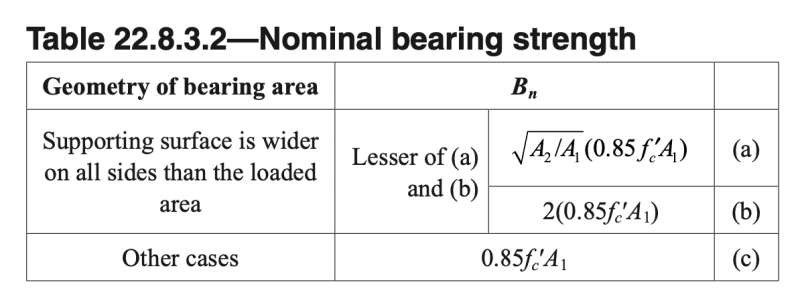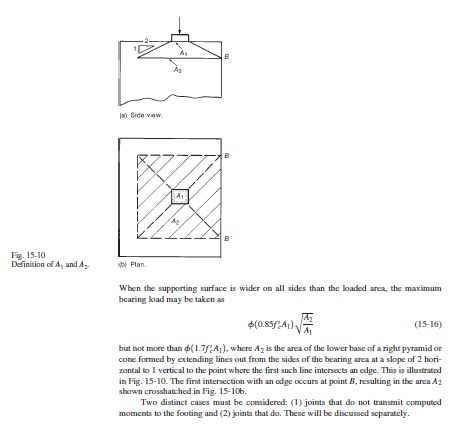XinLok
Civil/Environmental
- Oct 22, 2019
- 77
The maximum bearing load on the bottom of the column (ACI Code Table 22.8.3.2) = ∅ x 0.85 x f'c A1.where A1 is the area of the contact surface between the column and the footing.
When the contact-supporting surface on the footing is wider on all sides than the loaded area, the maximum bearing load on the top of the footing may be taken as
0.85 x ∅ x f'c x A1 x sqrt(A2 / A1)2 , but not more than 1.7 x ∅ x f'c x A1.

Can anyone explain this please?
When the contact-supporting surface on the footing is wider on all sides than the loaded area, the maximum bearing load on the top of the footing may be taken as
0.85 x ∅ x f'c x A1 x sqrt(A2 / A1)2 , but not more than 1.7 x ∅ x f'c x A1.

Can anyone explain this please?

